The foundations of art history date back tens of thousands of years, when ancient civilizations used the techniques and means available to represent culturally significant themes. From these early examples, numerous artistic movements have emerged, each with distinctive styles and characteristics that reflect the political and social influences of their time.
What does Fauvism mean and what is conceptual art about? Talking about art is a discipline in itself, and if you are new to this world, you probably have many questions, especially about each movement and the different types of art.
Influential art genres, from the Renaissance to the emergence of Modernism, have left an indelible mark on history.
By clarifying the concepts about the history and importance of artistic movements, we will have a deeper understanding of how famous artists like Van Gogh, Picasso, and Warhol revolutionized the art world.
Kuadros has prepared a list of the most important movements for you.
No.1 Italian Renaissance (1400–1550)
Some representatives: Gates of Ghiberti, Brunelleschi, Donatello, Botticelli, Leonardo, Michelangelo, Raphael.

By the end of the 14th century, a group of Italian thinkers proclaimed that they lived in a new era. The dark and barbaric "Middle Ages" had ended; a "rinascità" ("rebirth") of learning, literature, art, and culture was beginning. This was the birth of the period now known as the Renaissance. For centuries, scholars have agreed that the Italian Renaissance happened this way: between the 14th and 17th centuries, a modern way of thinking about the world and man's place in it replaced old ideas. Many of the scientific, artistic, and cultural achievements of this period share common themes, especially the humanist belief that man is the center of his own universe.
Italy in the 15th century was unlike anywhere else in Europe. It was divided into independent city-states, each with its own government. Florence, where the Italian Renaissance began, was an independent republic and a banking and commercial center. Wealthy Florentines displayed their power by supporting artists and intellectuals, making the city the cultural center of Europe and the Renaissance.
The Renaissance is divided into two main parts:
During the Early Renaissance, artists began to reject the Byzantine style of religious painting and strove to create realism in the representation of human form and space. This goal began with Cimabue and Giotto and reached its peak with artists such as Andrea Mantegna and Paolo Uccello. Although religion remained important in daily life, the mythological theme also gained ground. Many point to The Birth of Venus by Botticelli as the first panel painting of a mythological scene.
The period known as the High Renaissance represents the culmination of the goals of the Early Renaissance. The most prominent artists are Leonardo da Vinci, Raphael, Titian, and Michelangelo. Their paintings and frescoes are some of the most recognized works in the world, such as The Last Supper, The School of Athens, and the ceiling paintings of the Sistine Chapel by Michelangelo.
Buy a reproduction of La Mona Lisa in the online store of Kuadros
No.2 Baroque (1600–1750)
Some representatives: Rubens, Rembrandt, Caravaggio, Velázquez, Palace of Versailles.

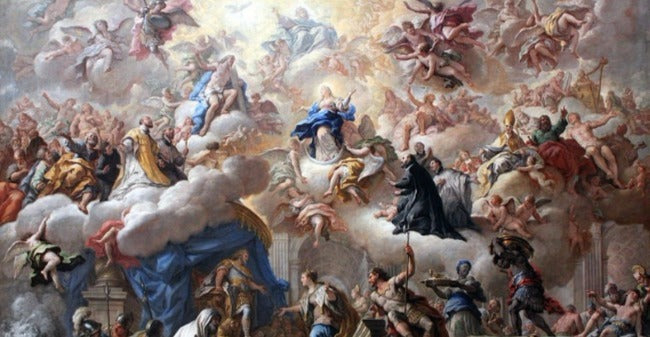
The term Baroque likely derives from the Italian "barocco," used in the Middle Ages to describe logical obstacles. It later came to mean complex ideas or twisted thought processes. Another possible source is the Portuguese "barroco" (Spanish "barrueco"), which describes an irregular or imperfect pearl. The Baroque is a movement in art and architecture developed in Europe from the early 17th century to the mid-18th century. It emphasizes dramatic and exaggerated movement and clear details to produce drama, tension, exuberance, and grandeur.
The first manifestations occurred in Italy in the last decades of the 16th century, while in regions like Germany and colonial South America, certain culminating achievements of the Baroque did not occur until the 18th century.
Artists revived the ideals of beauty from the Renaissance, infusing works of art, music, and architecture with a new extravagance and ornamentation. This style, known as Baroque, is characterized by innovative techniques and elaborate details, offering a lush visual language in a relatively moderate period for art. The Baroque spread throughout Europe, driven by the Pope in Rome and Catholic rulers in Italy, France, Spain, and Flanders. It further extended through religious orders via monasteries and convents.
The emerging Baroque style was both sensual and spiritual. A naturalistic treatment made religious images more accessible, while dramatic and illusory effects stimulated piety and conveyed divine splendor. The ceilings of churches dissolved into painted scenes that directed the senses toward the celestial.
While the subject and style may vary among Baroque paintings, most share drama as a common element. In works by artists like Caravaggio and Rembrandt, the interest in drama manifests in intense contrasts of light and shadow.
The great master of the Catholic region ruled by the Spanish was the painter Peter Paul Rubens, whose dynamic compositions and vigorous figures are the epitome of Baroque painting. The elegant portraits of Anthony van Dyck and the solid works of Jacob Jordaens followed his example. Art in the Netherlands was influenced by the realistic tastes of the middle class, so painters like Rembrandt and Frans Hals remained independent of Baroque style in important aspects. However, the Baroque had a notable impact in England, especially in the churches and palaces designed by Sir Christopher Wren and Sir John Vanbrugh.
Like Renaissance statues, such as Michelangelo's iconic David, Baroque sculptures were often intended to adorn majestic buildings and other grand settings, such as church interiors and royal gardens.
The last flowering of the Baroque occurred in southern Germany and Austria, where native architects moved away from Italian models in the 1720s.
Buy a reproduction of Las Meninas in the online store of Kuadros
No.3 Realism (1848–1900)
Some representatives: Corot, Courbet, Daumier, Millet.

Realism is the precise, detailed, and unadorned representation of nature or contemporary life. It rejects idealization in favor of close observation of external appearances. As such, realism has encompassed many artistic currents in different civilizations. In the visual arts, for example, it can be found in Hellenistic Greek sculptures depicting boxers and old women. Works by 17th-century painters such as Caravaggio, Dutch genre painters, the Spaniards José de Ribera, Diego Velázquez, and Francisco de Zurbarán, and the Le Nain brothers in France have a realistic approach. The works of 18th-century English novelists like Daniel Defoe and Henry Fielding may also be considered realistic.
Realism emerged in France in the 1850s, following the Revolution of 1848, which established the "right to work" in the country. It introduced the idea of common people, contemporary settings, and everyday scenes as worthy artistic subjects.
It spread across Europe, from the Russia of Alexander II to the Britain of Queen Victoria, through the Germany of Wilhelm I, the Italy of the Risorgimento, and beyond. The year 1855 was significant in establishing realism in Europe.
Gustave Courbet is considered the main figure of realism. He laid the foundations of the movement in the 1840s by portraying peasants and workers without glorifying them, presenting them boldly and severely, which generated controversy.
The style and theme of Courbet were based on the work of Barbizon School painters. Théodore Rousseau, Charles-François Daubigny, Jean-François Millet, and others settled in the French village of Barbizon with the aim of faithfully reproducing the local character of the landscape.
Pictorial realism outside France was well represented in the 19th century in the United States. Winslow Homer's powerful and expressive paintings on marine themes and the works of Thomas Eakins are sincere and deeply observed records of contemporary life. Realism was a distinct current in 20th-century art, derived from artists' desire to present more sincere and unidealized visions of everyday life or to use art as a vehicle for social and political critique.
The rough and almost journalistic scenes of urban life of the group known as The Eight fall into this category. The German movement Neue Sachlichkeit (New Objectivity) worked in a realistic style to express the cynicism and disillusionment after World War I in Germany. Socialist realism in the Soviet Union used techniques of naturalistic idealization to create portraits of bold workers and engineers.
Furthermore, realism directly inspired contemporary art movements such as photorealism and hyperrealism, demonstrating its lasting and evolving legacy.
Buy a reproduction of The Gleaners in the online store of Kuadros
No.4 Impressionism (1865–1885)
Some representatives: Monet, Manet, Renoir, Pissarro, Cassatt, Morisot, Degas.

French Impressionism is an important movement that developed mainly in France in the late 19th and early 20th centuries. Its most notable characteristic was the attempt to accurately and objectively capture visual reality in terms of transient effects of light and color. Impressionist artists showed a new way of observing and representing the world, renouncing realistic representations in favor of fleeting impressions of their surroundings, often outdoors. In music, it sought to convey an idea or an effect through a wash of sound rather than a strict formal structure.
By the late 1860s, the art of Manet reflected a new aesthetic that would be a guiding force in Impressionist work, where the importance of traditional subject matter was reduced and attention shifted to the manipulation of color, tone, and texture.
In 1874, a group of artists called the Société Anonyme de Peintres, Sculpteurs, Graveurs, etc., organized an exhibition in Paris that launched the movement called Impressionism. Its founding members included Claude Monet, Edgar Degas, and Camille Pissarro. Monet's painting Impression, Sunrise (1872) earned them the initially mocking name "Impressionists" from journalist Louis Leroy. The artists soon adopted the name as descriptive of their intention to accurately convey "visual impressions." While conservative critics derided their work for its incomplete and sketchy appearance, more progressive writers praised it for its description of modern life.
Since its inception, Impressionism has been defined by characteristics such as loose brushwork, distinctive colors, representations of common themes, a focus on light, and compositions inspired by photography.
By the mid-1885s, the Impressionist group began to dissolve as each painter pursued their own interests and aesthetic principles. However, they achieved a revolution in the history of art, providing a technical starting point for post-Impressionist artists like Cézanne, Degas, Gauguin, Van Gogh, and Georges Seurat, liberating Western painting from traditional techniques and approaches.
Heritage and presence of Impressionism today
As a starting point for modernism, Impressionism influenced many later movements. Post-Impressionists adopted its loose brushwork; Abstract Expressionists found inspiration in Monet's unconventional approach; and many contemporary artists continue to work in a Neo-Impressionist style.
Buy a reproduction of Woman with a Parasol in the online store of Kuadros
No.5 Post-Impressionism (1885–1910)
Some representatives: Van Gogh, Gauguin, Cézanne, Seurat.

Post-Impressionism is a term used to describe the reaction in the 1880s against Impressionism. It was led by Paul Cézanne, Paul Gauguin, Vincent van Gogh, and Georges Seurat. The Post-Impressionists rejected the Impressionism's concern for spontaneous and naturalistic representation of light and color.
These painters, except for Van Gogh, were French and most started as Impressionists; each abandoned the style to form their own highly personal art.
Like the Impressionists, they emphasized the artificiality of the image. They believed that color could be independent of form and composition as an emotional and aesthetic bearer of meaning. Both Impressionism and Post-Impressionism include some of modern art's most famous works, such as Monet's Water Lilies and Van Gogh's The Starry Night.
They shared their work with the public through independent exhibitions in Paris. In 1910, art critic Roger Fry coined the term "Post-Impressionism" with his exhibition "Manet and the Post-Impressionists." Fry believed that the beauty of art is rooted in perception. "Art is an expression and a stimulus for imaginative life rather than a copy of real life," he explained in "An Essay in Aesthetics."
The Post-Impressionists believed that a work of art should not revolve around style, process, or aesthetic approach, but emphasize symbolism, communicating messages from the artist's subconscious.
They often exhibited together, but unlike the Impressionists, who started as a united group, they painted mainly alone. Cézanne painted in isolation in Aix-en-Provence; Gauguin settled in Tahiti in 1891; and Van Gogh painted in the countryside in Arles. Both Gauguin and Van Gogh rejected the objectivity of Impressionism in favor of a more personal spiritual expression.
"Color! What a deep and mysterious language, the language of dreams." - Paul Gauguin
Unlike the Impressionists who sought to capture the effect of natural light, the Post-Impressionists employed an artificial color palette to portray their perceptions of the world. Saturated tones and multicolored shadows are evident in their paintings, demonstrating their innovative approach.
Post-Impressionism moved away from a naturalistic approach and headed towards movements like Cubism and Fauvism, which sought to evoke emotions through color and line.
Buy a reproduction of The Starry Night in the online store of Kuadros
No.6 Fauvism and Expressionism (1900–1935)
Thick paint, colors that leap off the page, and unnatural tones: Fauvism and Expressionism are two of the movements that brought these characteristics to life. So, what is the difference between them, if they can be described in the same way? First, we will explain Fauvism and Expressionism on their own.
Fauvism
Some representatives: Matisse, Derain, Signac

Fauvism dominated the art scene from 1905 to 1910, characterized by intense colors and bold brush strokes. In some cases, artists applied paint directly from the tube. The colors did not have to be true to nature; they could be altered to show emotion. They chose simple themes, and because of this, the paintings appeared almost abstract. Art critic Louis Vauxcelles coined the term after describing the work of Henri Matisse and André Derain as "les fauves" or "the wild beasts" during an exhibition at the Salon d’Automne in Paris in 1905. Their work was filled with unnatural colors and wild patches of paint on the canvas. This would be the beginning of Fauvism.
Fauvist artists were deeply interested in 19th-century scientific color theory. Specifically, using complementary colors, they understood how to make colors appear brighter and bolder by incorporating these theories.
Matisse's painting "Woman with a Hat" was criticized for the unnatural colors in the woman's face. Paul Signac is famous for his pointillism and was a mentor to Matisse. Pointillism is a technique where small dots of primary colors are placed together; from a distance, they blend into a single image. This can be compared to pixels on a computer screen.
In addition to Matisse and Derain, other important Fauvist artists include Georges Braque, Raoul Dufy, Georges Rouault and Maurice de Vlaminck.
Expressionism
Some representatives: Munch, Kandinsky, Klee

Expressionism is a general term for any artwork that distorts reality to align with the artist's internal feelings, viewpoints, or ideas. In summary, it is art that expresses internal realities in the external world. There are distinctive characteristics of Expressionism: intense and non-naturalistic colors, paint applied in large quantities creating texture on the canvas.
Expressionism came "from within," being a reflection of the artist's feelings rather than a representation of a scene. Two influential Expressionist artists were Emil Nolde and Edvard Munch.
Regarding theme, Expressionist art tends to be emotional and sometimes even mythical. Given that Expressionism is such a broad term, it is easy to attribute it to art from any period, but it generally applies to 20th-century art. It is said to have begun with the work of Vincent van Gogh and extends through to modern art as we know it today.
The main contributors to the Expressionist movement include artists such as Wassily Kandinsky, Paul Klee, Max Beckmann, Ernst Ludwig Kirchner, and others.
Buy a reproduction of The Scream in the online store of Kuadros
Fauvism can be seen as a subset of Expressionism. They use similar techniques and are classified by the same characteristics; the real difference is the specific nature of Fauvism as opposed to the generality of Expressionism.
Something that can be considered Fauvist could also be part of the Expressionism field, but not all Expressionism is Fauvism. Fauvism is a bit wilder but with a more simplistic theme.
No.7 Cubism (1905–1920)
Some representatives: Pablo Picasso, Georges Braque

Cubism is a highly influential style of visual arts from the 20th century, created mainly by Pablo Picasso and Georges Braque in Paris between 1907 and 1914. The Cubist style emphasized the flat, two-dimensional surface of the picture plane, rejecting traditional techniques of perspective, foreshortening, modeling, and chiaroscuro, refuting older theories that art should imitate nature. The Cubists believed that the traditions of Western art had been exhausted and, to revitalize their work, they turned to the expressive energy of art from other cultures, particularly African art.
Cubism derives its name from the remarks of critic Louis Vauxcelles, who derogatorily described Braque's work in 1908 as made up of cubes. In Braque's painting, the volumes of houses, the cylindrical shapes of trees, and the color scheme recall the landscapes of Paul Cézanne, who profoundly inspired the Cubists in their early stage of development (up to 1909). However, it was Les Demoiselles d'Avignon, painted by Picasso in 1907, that foreshadowed the new style; in this work, the forms of five female nudes become angular and fractured figures.
Cubism developed in two distinct phases: Analytical Cubism and Synthetic Cubism. Analytical Cubism (1908–1912) is more austere and characterized by a combination of planes and lines in muted tones. Synthetic Cubism (1912–1914) is characterized by simpler forms and brighter colors, including real elements combined, such as newspapers. The inclusion of real objects directly into art was the beginning of one of the most important ideas in modern art.
Although Picasso and Braque are credited with creating this new visual language, it was adopted and developed by many painters, including Fernand Léger, Robert and Sonia Delaunay, Juan Gris, and others. Cubism also profoundly influenced 20th-century sculpture and architecture.
The liberating formal concepts initiated by Cubism had far-reaching consequences for movements like Dada and Surrealism, as well as for artists pursuing abstraction worldwide.
No.8 Dada and Surrealism (1917–1950)
Dada
Some representatives: Hugo Ball, Marcel Duchamp, Emmy Hennings, Hans Arp, Raoul Hausmann, Hannah Höch, Francis Picabia, George Grosz

Dada was an avant-garde European art movement, with centers in Zurich and New York. It emerged as a direct reaction to the slaughter, propaganda, and madness of World War I. Independent groups linked by common ideas emerged in Berlin, Paris, and other places. They did not share a universal style but were connected by their rejection of idealism and obsolete artistic and intellectual conventions.
The name "Dada," randomly drawn from a dictionary in 1916, means "hobby horse" in French or "yes yes" in Romanian and Russian. But as a name for a movement, it really means nothing. Tired of the culture that had produced the slaughter of World War I, the Dadaists challenged all conventions, celebrating chance and the absurd.
The roots of Dada lie in the pre-war avant-garde. The term "anti-art," a precursor to Dada, was coined by Marcel Duchamp around 1913 to characterize works that challenge accepted restrictions of art.
The Dada movement included public meetings, demonstrations, and publications of art and literature magazines. Art, politics, and culture were frequently discussed topics in a variety of media.
Surrealism
Some representatives: Max Ernst, André Masson, Salvador Dalí, René Magritte

Surrealism was one of the most important and subversive movements of the 20th century. It emerged in the 1920s and provided a radical alternative to the rational and formal qualities of Cubism. It was a literary, philosophical, and artistic movement that explored the workings of the mind, advocating the irrational, the poetic, and the revolutionary.
Unlike Dada, from which it emerged in many ways, it emphasized the positive rejection of earlier traditions. André Breton, leader of a new group of poets and artists in Paris, defined Surrealism in his "Surrealist Manifesto" (1924) as: "Pure psychic automatism, by which it is proposed to express... the real functioning of thought."
Several threads can be distinguished in the visual manifestation of Surrealism. Artists like Max Ernst and André Masson favored automatism, where conscious control is suppressed and the subconscious is allowed to take over. In contrast, Salvador Dalí and René Magritte pursued a hallucinogenic sense of super-reality in which the represented scenes make no real sense. A third variation was the juxtaposition of unrelated elements, establishing a reality outside the normal boundaries.
Surrealism originated in Paris, but its influence spread through magazines and international exhibitions. With the outbreak of World War II, the center of surrealist activity moved to New York. Although as a movement it lost coherence after the war, it has retained a powerful influence on contemporary art.
No.9 Abstract Expressionism (1940–1950)
Some representatives: Jackson Pollock, Willem de Kooning, Franz Kline

Abstract Expressionism was a movement that developed in New York in the 1940s and 1950s. Although the term was not ideal, it encompassed artists who filled their canvases with fields of color and abstract shapes, as well as those who attacked their canvases with vigorous gestural expressionism. All were committed to art as an expression of the self, born from deep emotions and universal themes.
The movement encompassed many different pictorial styles. Some artists, like Jackson Pollock and Willem de Kooning, were characterized by a loose and dynamic handling of paint. Others, like Mark Rothko, used large areas of flat color to achieve subtle and meditative effects.
Although the movement has largely been portrayed as belonging to male artists, there were several important female abstract expressionists that emerged during this period.
No.10 Pop Art (1960)
Some representatives: Andy Warhol, Roy Lichtenstein, James Rosenquist, Claes Oldenburg
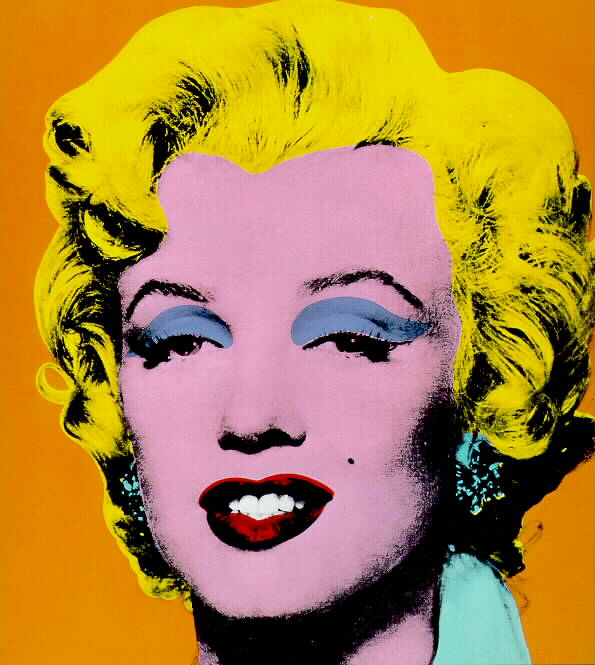
Pop Art began with artists in New York such as Andy Warhol, Roy Lichtenstein, James Rosenquist, and Claes Oldenburg, who drew inspiration from popular images and were part of an international phenomenon. It was a revolt against the dominant approaches to art and culture and the traditional views of what art should be. Young artists felt that what they were being taught in art school and what they saw in museums had nothing to do with their lives.
In 1957, pop artist Richard Hamilton outlined the characteristics of pop art in a letter: "Pop art is: popular, transitory, disposable, low-cost, mass-produced, young, clever, sexy, gruesome, glamorous, big business."
Pop brought art into new thematic areas and developed new ways to present it, and can be seen as one of the first manifestations of postmodernism.
No.11 Postmodernism (1970–)
Some representatives: Gerhard Richter, Cindy Sherman, Anselm Kiefer, Frank Gehry, Zaha Hadid

Marilyn in the Sky by James Gill
The term "postmodernist art" refers to a broad category of contemporary art created from approximately 1970 onward. Its hallmark is its rejection of the aesthetic upon which its predecessor, "modern art," was based. One of the values rejected is the idea that "art" is something "special" that should be separate from popular taste.
Anti-authoritarian by nature, postmodernism refused to acknowledge the authority of any style or definition of what art should be. The distinction between high culture and popular culture, between art and everyday life, was dismantled. It introduced a new era of freedom and the sense that "anything goes."
Often mixing different styles and media, postmodern art can also borrow from or comment ironically on styles from the past. Postmodernists consider their theoretical stance to be inclusive and democratic.
In the 1980s and 1990s, postmodernism became the unofficial philosophy of the "identity politics" movement.
KUADROS ©, a famous painting on your wall.


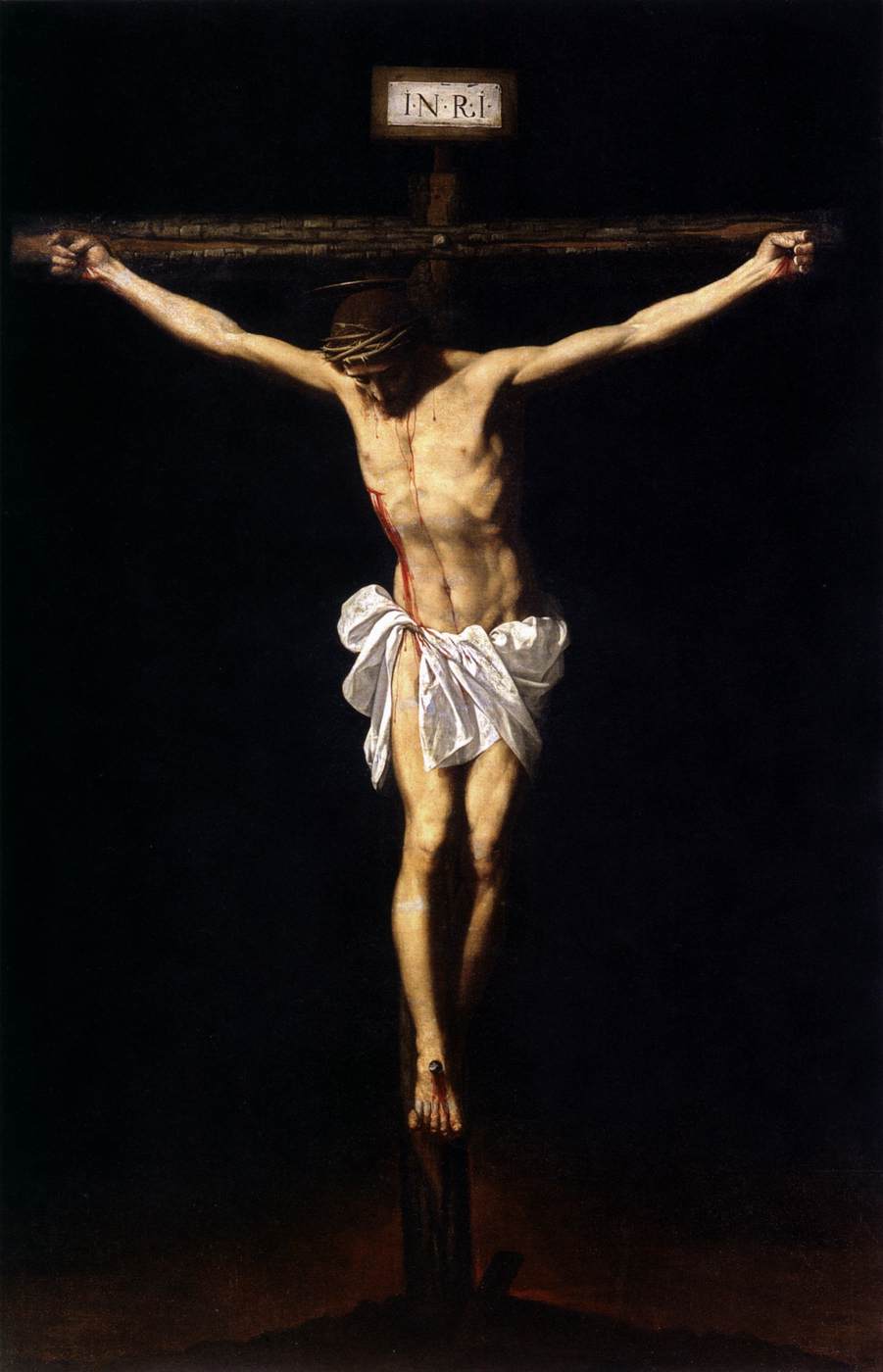
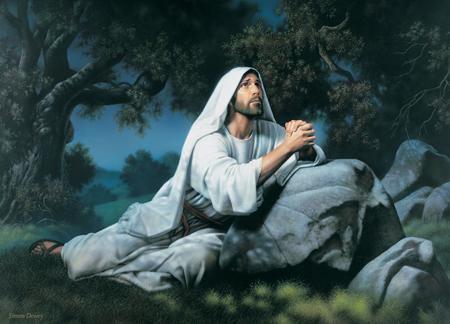
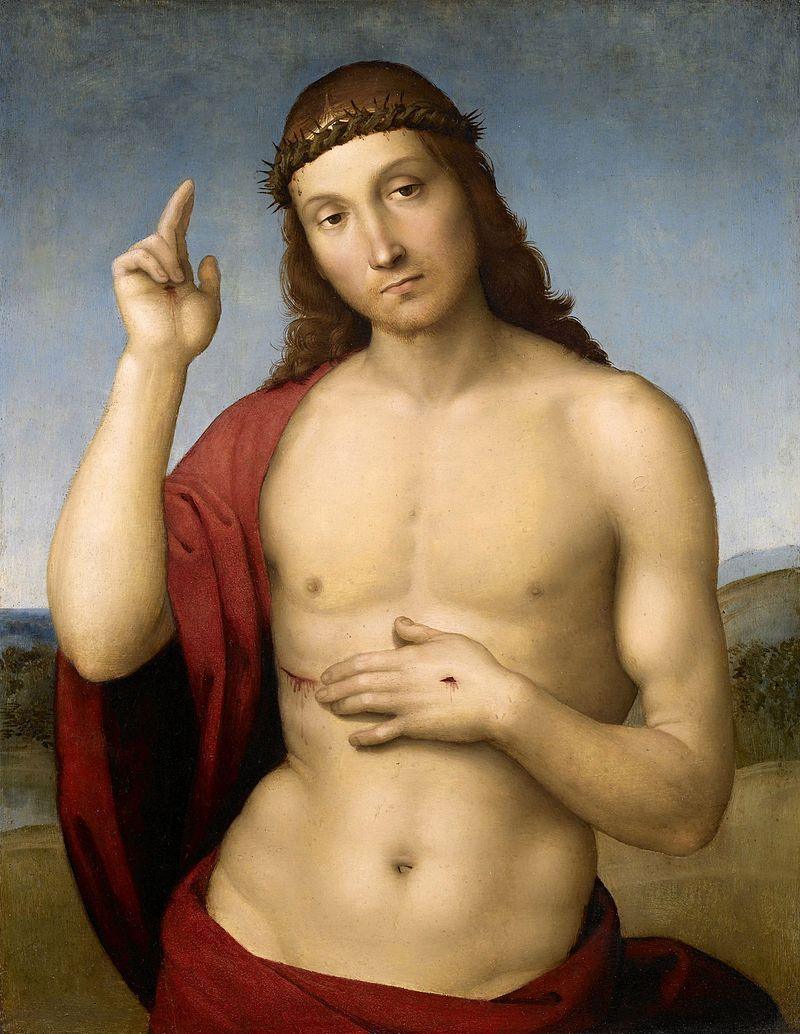
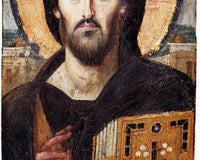
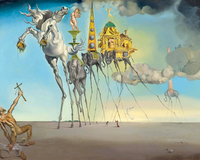
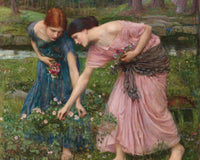


1 comment
professora Irismar
MUITO,MATERIIAL RIQUISSIMO.OBRIGADA.